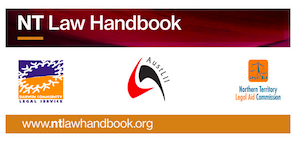-- JonathanMo - 14 Sep 2015
Protection for computer software
Computer programs ordinarily receive copyright protection as 'literary works'. A basic problem for protection of computer programs is that copyright law protects only the expression of an idea, not the idea itself. Thus, for example, suppose a computer program is developed which performs a certain function (for example, provides a means for restricting or gaining access to confidential information). Suppose a rival manufacturer produces a program which replicates that function. The second program might only be in breach of the first manufacturer's copyright if a court considers that the 'source code' or written expression of the second computer program - and possibly also the 'object code' or electronic impulses which cause the computer to function - reproduce the first manufacturer's source and object codes so closely that it can be considered that the 'expression' of the idea has been taken. If the second program merely performs the same 'function' but by using a different program - something which, for an experienced programmer, is often relatively easy to accomplish - then the second program will arguably not be in breach of copyright. See Computer Edge Pty Ltd v Apple Computer Inc [1986] HCA 19; (1986) 161 CLR 171; 65 ALR 33 (High Court); Autodesk Inc v Dyason [1992] HCA 2; (1992) 173 CLR 330; Data Access Corporation v Powerflex Services Pty Ltd [1999] HCA 49; (1999) 202 CLR 1; 166 ALR 228. The Copyright Amendment (Digital Agenda) Act 2000 (the Digital Agenda Act), has revised the definition of computer programs to 'an expression, in any language, code or notation, of a set of instructions, intended ... to cause a device having digital information processing capabilities to perform a certain function' [CA s.10(1)]. The Act also introduces a new right of communication to the public. This encompasses the old broadcast and cable transmission rights. The right to communicate is further defined in section 10(1) of the CA, to mean 'to make available online or electronically transmit (whether over a path, or a combination of paths, provided by a material substance or otherwise)'. This right is technology neutral and clearly includes transmission over the internet. Another area of debate concerns whether copyright protection extends to databases or works stored in computer memory. The existing CA definition of 'literary work' appears broad enough to apply to all forms of databases, including traditional hard-copy databases, databases stored in computer memory, and databases stored in other forms of storage such as floppy discs, tapes and CD ROMS. Whether a compiler of a computer database has copyright in that database will depend particularly on whether the database satisfies the requirement of 'originality' in the CA, which will depend in turn on whether 'sufficient skill and judgment have been exercised in devising the arrangements of the whole work'. However, the intellectual property rights of the compiler of the database do not in themselves diminish the possible rights of the supplier of the information. A question arises as to the duration of copyright protection for computer databases, and also when copyright first comes into existence. When an electronic database is being constantly updated, the question becomes who is the 'author' and when the database is first 'made'. Copyright © by the contributing authors. All material on this collaboration platform is the property of the contributing authors.
Copyright © by the contributing authors. All material on this collaboration platform is the property of the contributing authors. Ideas, requests, problems regarding AustLII Communities? Send feedback
This website is using cookies. More info.
That's Fine

